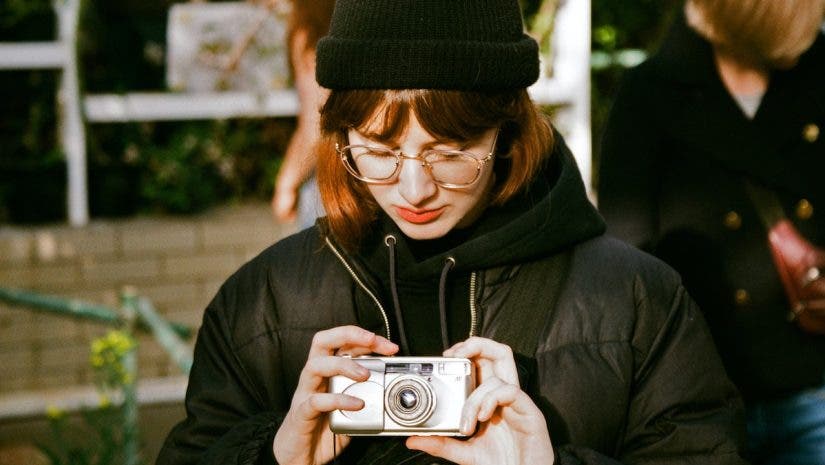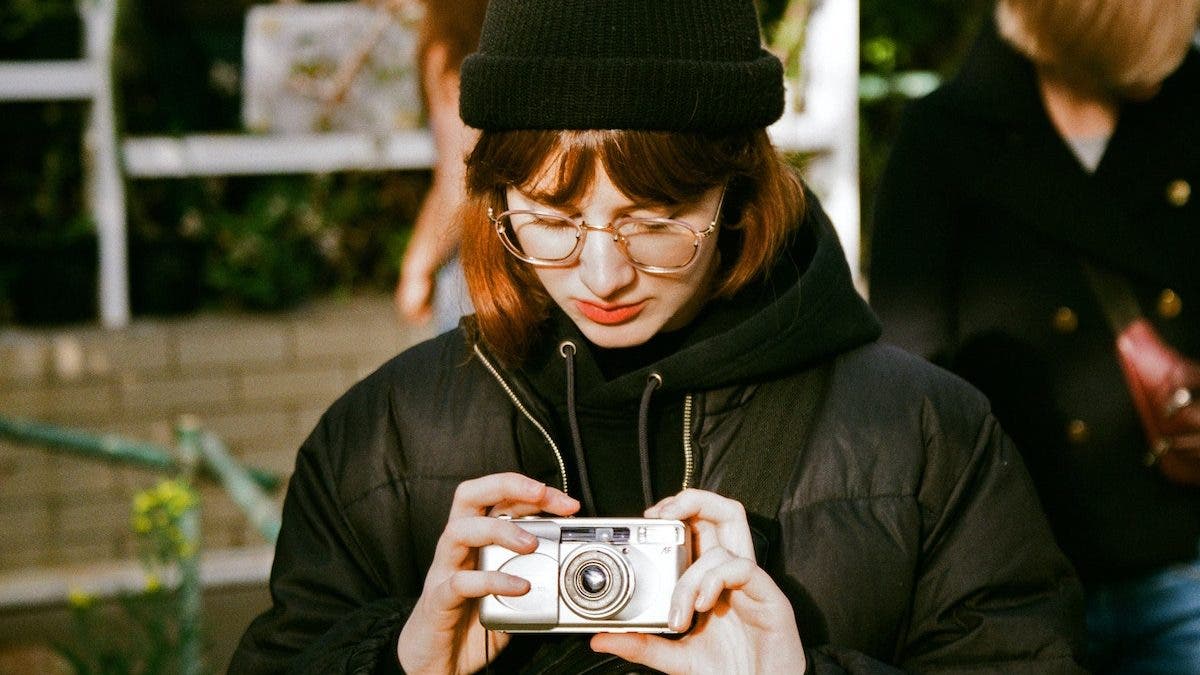Gen Z has taken a liking to retro digital (point-and-shoot) cameras from the 90’s and early 2000’s. But what could’ve sparked this newfound interest in old gadgets?
Within the junk drawer of most suburban homes, you’ll likely find some variation of a digital point-and-shoot camera. Once popular in the Y2K era of photography, point-and-shoots are small enough to fit in your purse or pocket. While technology has certainly evolved since the adoption of this camera, many within the Gen Z community are opting for the 90s nostalgia.
How Do Retro Digital Cameras Work?
First introduced in the late 80’s, point-and-shoot digital cameras offer photos with very little manual work needed. Most have a built-in lens that supplies different focal lengths without removing and replacing your lens like an interchangeable lens camera. Most point-and-shoot cameras also automatically set the focus and exposure. This supplies a unique and specific look that can only be found on a point-and-shoot (or compact camera). These cameras have memory cards that store the photos, which can then be inserted into and uploaded to your computer.
The Canon PowerShot SD960 is an example of a point-and-shoot camera:
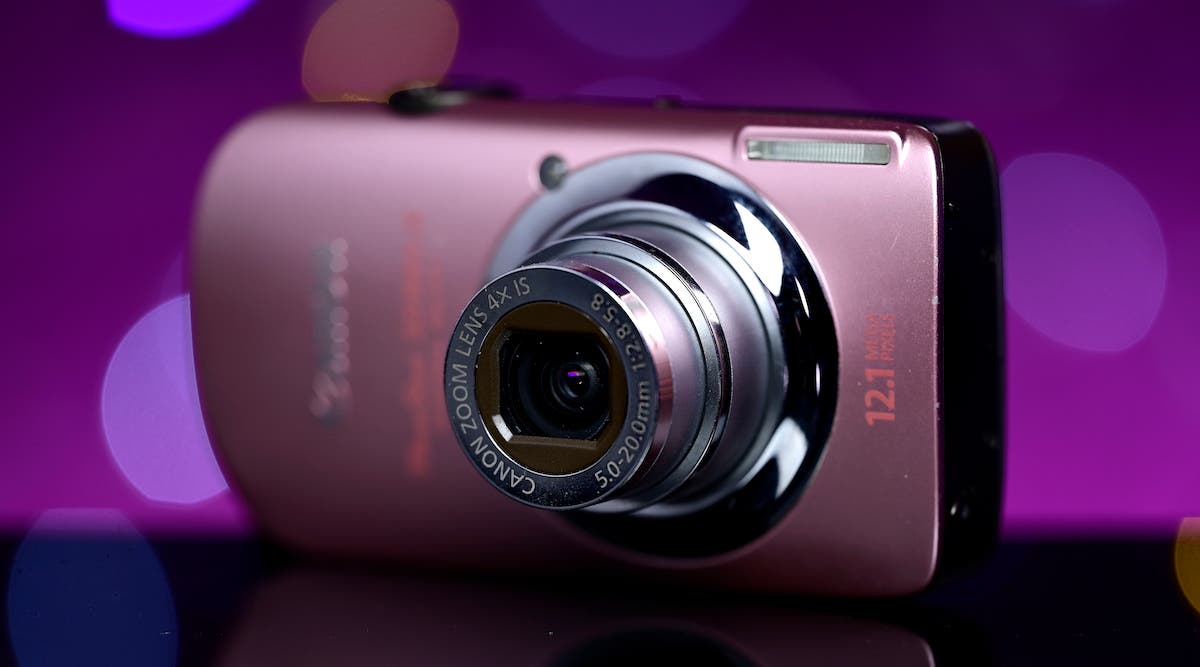
Some other popular options right now are the Olympus FE-230, Sony Cybershot DSC-W220, Nikon Coolpix L15, and Canon Powershot Sx100. All of these are seeing a resurgence despite being at least 10 years old. But why is Gen Z gravitating toward this old technology?
The Resurgence of Y2K
If you scour keywords on TikTok and Instagram for more than a few minutes, it’s easy to notice how prevalent 90’s (and Y2K) fashion has become in recent months. The hashtag “#y2k” has over 14 billion views on TikTok and “#digitalcamera” has 184 million. The content ranges anywhere from shopping tips (such as where to thrift the best low-rise jeans and Juicy Couture velour tracksuits) to how-to’s on reviving your parent’s old flip phone. It seems only natural that the ’90s to early 2000s nostalgia has extended to photography as well.
Escape from the Smartphone
Many young adults looking to escape the never-ending world of social media and smartphone usage. In 2022, 36% of U.S. teenagers said they spent too much time on social media, according to the Pew Research Center. It makes sense that many teens are looking for other ways to photograph their lives— ways that don’t include the temptation of social media on their smartphones.
We saw a similar instance happen within the photography community years ago. In 2017, Polaroid Corporation properties were acquired by Impossible Project and rebranded as Polaroid Originals. Following this, there was a resurgence of the film camera with new variations from Polaroid and competitors. This is especially true for Fujifilm—now up to the Fujifilm Instax Mini 11, which continues to be a hot item at Adorama.
But, of course, a film camera requires a frequent purchase of new film. A point-and-shoot digital camera provides a similar style of photo without the additional cost.
A Lomography or “Vintage” Look
Because of how point-and-shoot cameras function, there are some obvious issues with image quality. For example, most have a very large depth of field, which means subjects closer to the camera can often appear out of focus. A byproduct of this is the softening of facial features and blemishes, which some prefer.
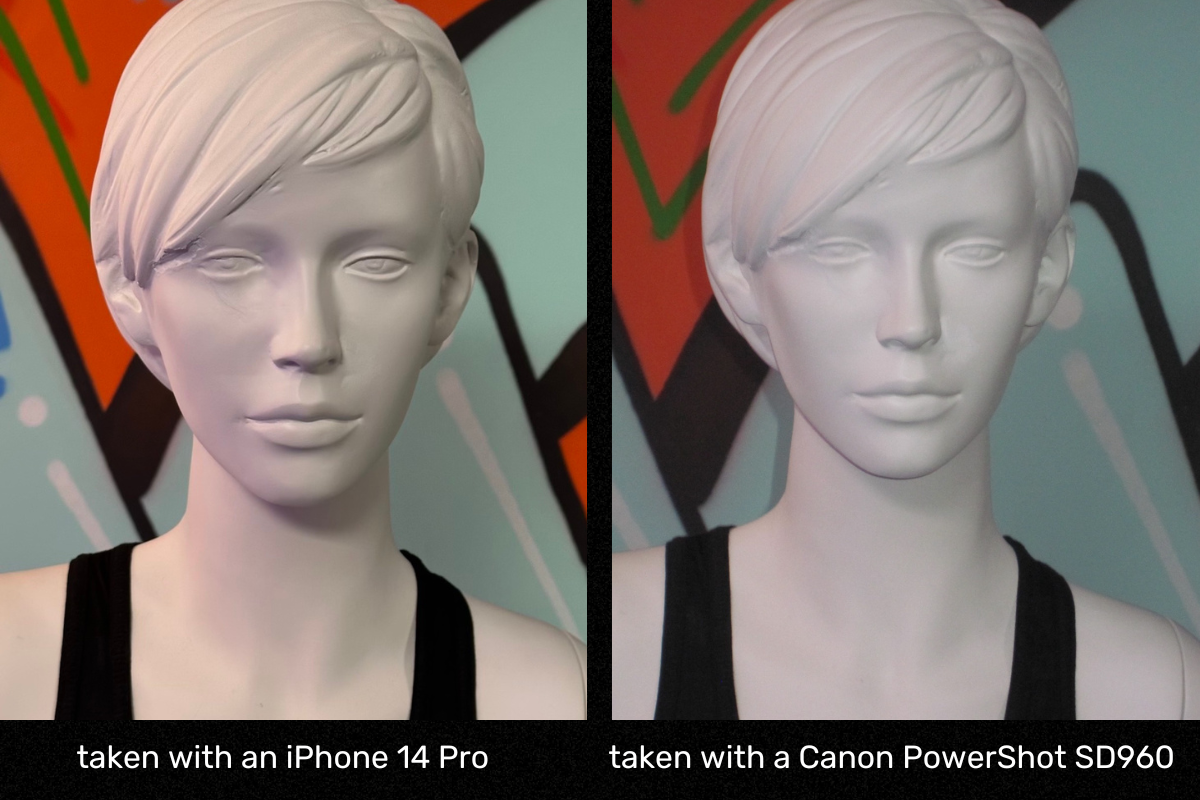
You also have no control over the aperture and shutter speed. Therefore, low-light conditions and fast-moving objects will suffer. Although, presumably, it’s the deficit of image quality that has been attracting a Gen Z audience.
This is similar to a Lomography style of photography, which is typically taken with an ultra-basic camera. The results, as you may expect, are full of flaws. You can often find misplaced focus, wrong colors, heavy vignetting, distortions, and blurs in Lomography photos. Similar to the style being produced by second-hand point-and-shoot cameras.
Here are some examples of what retro-style digital photos can look like:
An Interest in Sustainability
More than any other generation in recent years, Gen Z has prioritized second-hand purchasing options. Currently, 40% of Millennials and Gen Z shoppers have purchased second-hand apparel in the last 12 months, according to a recent report from the resale site, ThredUp.
Why might this be? Well, the majority of Gen Z consumers state that sustainability is more important to them than brand name when making purchase decisions. This pattern, of course, extends to the tech and photography world. With such a significant increase in e-waste over the past ten years, some users are choosing to invest in pre-owned gadgets—or use a rental company—rather than purchasing new. Extra perk: Reviving your family’s old tech gadgets costs nothing.
Here is another point-and-shoot option, the Canon SD 890 IS:
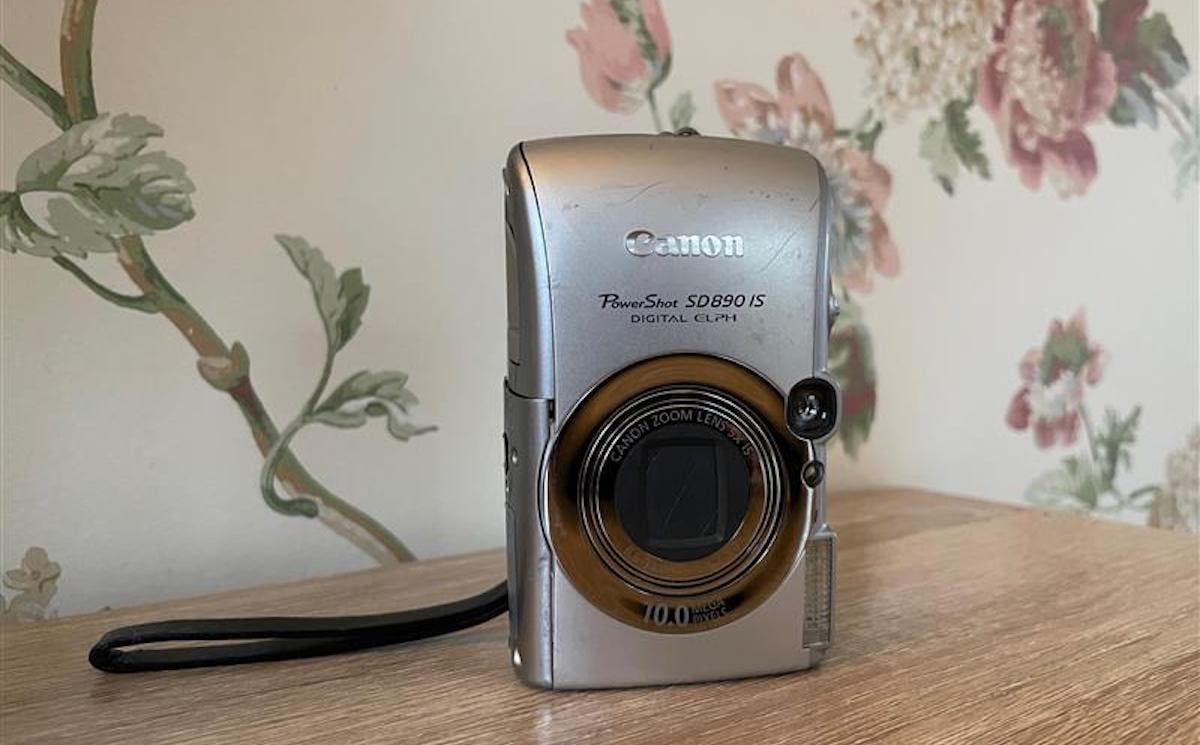
How Did Photography Brands Answer to the Retro Digicam Hype?
To cater to the trend and the younger audience wanting to stay on top of it, brands have started pushing out modern cameras with retro finishes and features. Some of these cameras are:
Canon PowerShot SX740 HS Digital Camera
The Powershot SX740 HS Digicam was the first ever point-and-shoot to be able to deliver 4K video, delivering that futuristic quality that we enjoy today. Despite its ability to adapt to modern photography needs, this digital camera can surely take a user back to the past.
One can capture retro-style with this camera thanks to the XS740 HS’s built-in Auto Lighting Optimizer brought to users by its DIGIC 8 Image Processor. The lighting optimizer deals with the blown-out areas by automatically taking the steps to maintain color and detail in the brightest parts of the picture. Transferring and then editing the photos to look more vintage is now possible thanks to the XS740’s ability to connect to mobile devices via Wi-Fi or Bluetooth. Add noise and adjust the contrast how you like to achieve that retro look!
Ricoh GR III Diary Edition Digital Camera
The iconic “Diary Edition” of the Ricoh GR III Digital Camera gives off a lot of retro vibes majorly from its processor. The digicam’s color reproduction is a wonder – offering detailed imaging across the entire sensitivity range. Which is a sight to see compared to a smartphone photo’s super washed–up colors. The colors in a photo are a big part of what tells its story, and the Ricoh GR III Diary Edition does each color justice, giving the photo a retro, rustic look. Also, the Diary Edition’s 24.2 M APS-C Size Image Sensor allows each color and pixel to render perfectly.
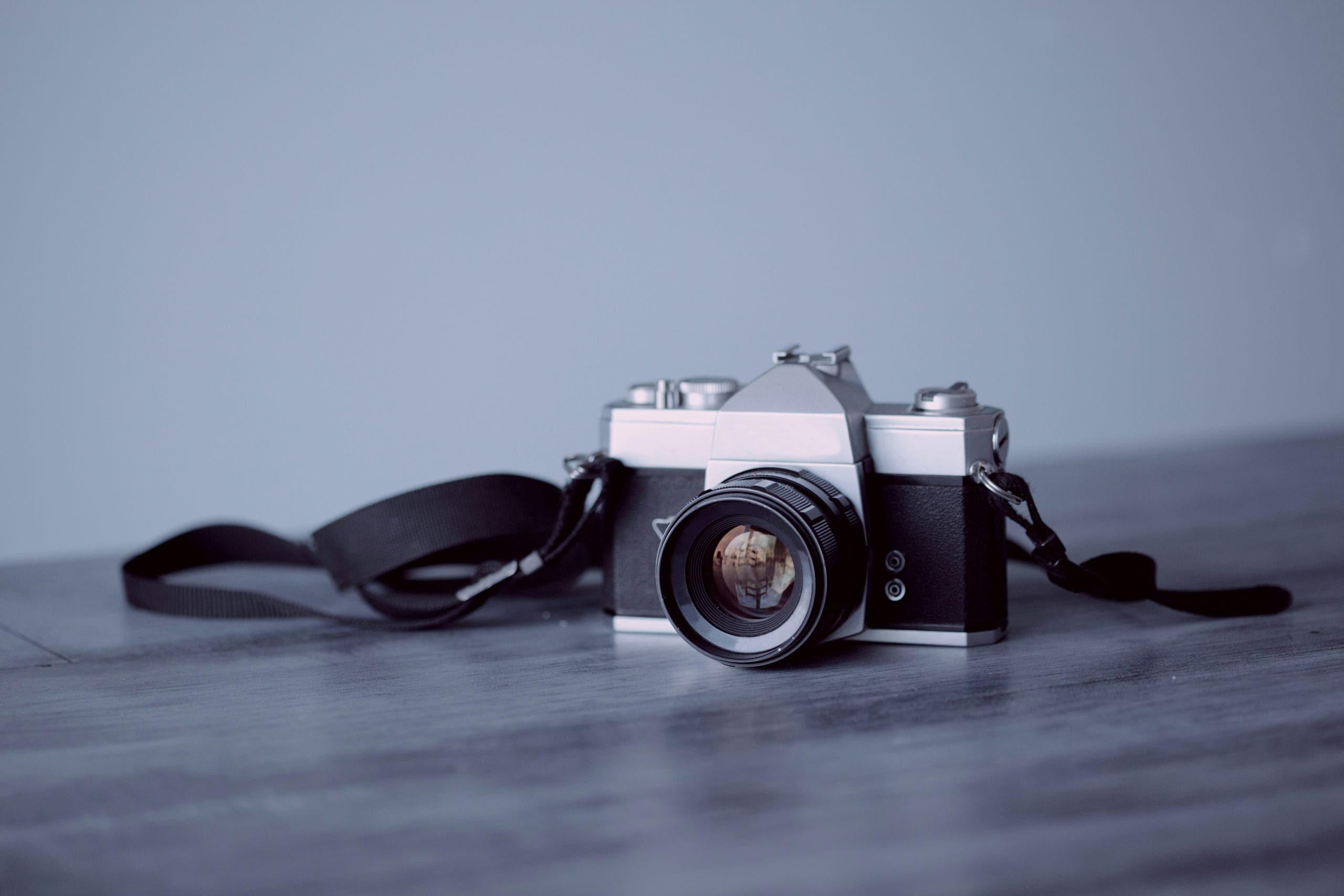
Ricoh GR IIIx HDF Digital Camera
Ricoh joins the retro digicam hype by releasing the GR IIIx HDF Digital Camera, whose primary feature is its Highlight Diffusion Filter. With this filter, users can replicate the softened highlights and gently blurred edges that are iconic to the whole aesthetic of old film photography.
Aside from its main feature, the GRx III HDF camera also houses Advanced Monochrome Mode that allows users to create classic black-and-white images or adjust the image’s parameters to their liking such as the filter effects, toning, contrast, and sharpness. A 40mm equivalent is also another perk for a retro vibe, providing a perspective favored by traditional street and documentary photographers.
The Ricoh GR IIIx HDF Digital Camera has a simpler sibling known as the Ricoh GR III HDF Digital Camera, and they share a lot of the same features. Although the latter lacks the newly designed 26.1mm lens with a 40mm effective field of view, advanced in-body RAW-data development capabilities, enhanced monochrome mode, and the sophisticated high-speed hybrid autofocus and shake reduction mechanisms found in the GR IIIx HDF.
Fujifilm X100VI Digital Camera
Fujifilm loves retro just as much as you do. In the newest X100VI Digital Camera are more than 20 film simulations. Among the over 20 simulations is the adored REALA Ace Mode which can produce colors the way we see it in real life or give users the classic film look, all in-camera!
The Fujifilm X100VI features a 40MP APS-C X-Trans CMOS 5 HR sensor that captures detailed and rich images, evoking the fine details and textures of classic film. Its built-in 4-stop neutral density (ND) filter allows for creative control over exposure and slow shutter effects, reminiscent of vintage photography techniques.
The camera’s compact and classic design not only provides a nostalgic feel but also encourages a traditional shooting style. Digital teleconverters at 1.4x and 2.0x replicate the fixed perspectives of prime lenses common in retro photography. While the advanced AI-trained autofocus system captures decisive moments with precision, just like the manual focus systems of vintage cameras.
Final Thoughts
There isn’t just one reason for the resurgence of retro digital cameras. Individual users likely have their own, unique reason for picking up a Canon PowerShot or Lomography camera. Even if it’s their family member’s used point-and-shoot camera, to take photos. Whatever the reason is, there’s no denying that the cyclical nature of trends should remind us to preserve the items in our junk drawer.
Frequently Asked Questions
Definitely! Older digital cameras are great for casual and professional photographers who seek to create retro photos. Though these cameras are a bit dated and their color might be chipped, there’s no denying their unique ability to bring us back to the 90s and early 2000s.
Unlike film cameras whose products might degrade over time, digital cameras are free from that worry. However, if digital cameras are not carefully looked after, it will affect their performance and the perceived quality of the images they produce. Some common problems to avoid or look out for are:
1. Sensor degradation
2. Scratches, dust, and fungus on the lens
3. Lack of firmware updates
4. Using the wrong type of memory card
The worth of buying an old point-and-shoot camera all depends on your priorities. You must value the nostalgia, simplicity, and aesthetic of film photography to consider an old point-and-shoot camera to be a worthy investment. Also, consider other factors like the camera’s condition. If it can still function or be navigated well, and its compatibility with modern tech. Like new ports and editing software – before making a decision.
After taking a photo, you’re left with a raw photo that has so much potential to be as vintage or retro-looking as you want it to be. To achieve such a look, you should:
1. Use retro filters or presets whether in-camera or in photo editing software.
2. Adjust colors and contrast to match how vintage cameras used to make pictures look, such as reducing saturation and contrast while increasing warmth.
3. Add grain and vignetting effects to copy the texture of old-timey photos.
4. Mimic older film formats such as cropping to 1:1 or 4:3 ratios.
5. Overlay your photos with vintage textures like paper or “scratches” to make your photo look like an aged print.
Is vintage photography not for you anymore? Here are other ways to deal with your old digital cameras rather than immediately putting them in the bin:
1. Donate them to a photography club in your local school, community centers, or an organization of your choice. They can use it for educational or documentation purposes.
2. Sell online through platforms like eBay, Craigslist, or Facebook Marketplace.
3. Recycle the cameras if they’re no longer functional or valuable. You can hand them over to electronic waste recycling centers to dispose of them in an eco-friendly manner.
